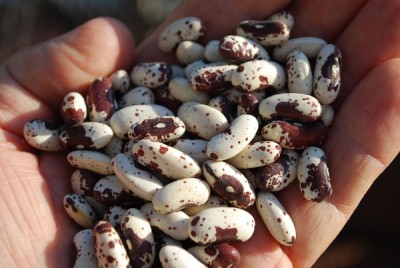
Image source: grow-it-organically.com
Between weeding, watering and keeping garden pests at bay, you may be thinking that you’ve got all you can contend with to keep your spring-planted garden going, but August is a great time to begin a second gardening season. In fact, you still have plenty of time before the first frost to plant many vegetables that will provide as big a harvest as your spring planting.
Here is a list of vegetables you can plant now and your family can enjoy eating when the weather cools. This is based on a cooler zone such as the upper Midwest, so adjust for your area.
1. Beans: The earlier in August, the better for bean planting. Look for varieties that have the word “early” on the seed package. Try these varieties: Provider, Bountiful and Black Valentine.
2. Carrots: There are quite a few varieties that can work. Give Scarlet Nantes a try.
3. Cucumber: Cucumbers grow well this time of year and are a good choice for August planting. Vine varieties do need plenty of room, so if space is a concern, try more compact bush varieties such as Marketmore.
4. Kale: A great addition to early fall soups, an August planted kale crop will yield well into the cooler months. Premier kale is a good choice for early maturity and for cold hardiness.
New Natural Fertilizer Doubles Garden Production!
5. Lettuce: You should be able to plant lettuce throughput the month and still enjoy a fall crop. Once again, look for early varieties. Good choices include Buttercrunch.
6. Peas: Your best options for successful August planting are green peas and sugar peas. A good variety to try is Sugar Snap and Green Arrow.
7. Radish: Radishes are fast and easy to grow and are a great addition to your late-summer garden. Plant now and you’ll have fresh radishes for your salads in about 30 days. Try French Breakfast.
8. Spinach: You can sow spinach now through the middle of the month for a fall harvest. Give Bloomsdale a shot.
Other vegetables to plant now for a fall harvest include: beets, endive and turnips. Be sure to clear your planting site of troublesome weeds and your finished spring plants. Turn and till the soil well before spreading a two- to four-inch layer of organic matter such as leaves, grass clippings or compost. This layer enriches the soil and serves to improve drainage and to retain moisture. Many of these plants can be successfully grown in containers as well.
Insects that have had all summer to increase their populations can be a problem with your late-summer plants. Ensure proper moisture for the plants you have in your garden and fertilize when necessary, keeping in mind that healthy plants are less susceptible to diseases and to insects. Check your plants frequently for signs of a problem.
Many vegetables, including cabbage, carrots, broccoli, cauliflower and Brussels sprouts, are more tender and have better flavor when they mature during cool weather. You can even extend the season by protecting your plants with floating row covers that are supported by stakes or wires after the nights cool down.
It is well worth the effort to plant now to keep your garden going into the cooler months.
What vegetables do you plant in the fall? Leave your comment in the section below:
Sign up for Off The Grid News’ weekly email and get $600 worth of survival blueprints … free!
 Off The Grid News Better Ideas For Off The Grid Living
Off The Grid News Better Ideas For Off The Grid Living




